Evidence Based Practice Review
Title: Is tendon pathology a continuum? A pathology model to explain the clinical presentation of load-induced tendinopathy.
Authors: Dr Jill Cook and Craig Purdam
Type: Scientific Review Article
Reference: British Journal of Sports Medicine 2009; 43; 409-416
Introduction
In the past 10 years research and new insights into tendon pathology has seen our understanding grow. Recently most therapists have had to stop themselves from saying the old term of “tendonitis” and learn the new term “tendinopathy”. But what else is important other than the new term.
Clinical Questions
- Do we really know what is going on at the tendon?
- Is there a reason why don’t eccentric exercises work for all tendinopathy patients?
- How can the sports physiotherapist better tailor interventions based on the varying presentations?
Causes of Tendinopathy: Tendon injuries are usually the result of increased loads and overuse. This leads to changes within the tendon, which make it harder for it to cope. The injuries may occur in the mid-portion or, more commonly, in the insertion. At both sites the pathological changes of the tendon appear to be the same. Despite the common pathological changes within the tendon, different treatment approaches are used specific to the site of the problem, and this has been shown to have better outcomes.
Clinical Presentations: Clinically people of different ages will often present with varying degrees of pain and ability to function. Although their individual factors and “loading history” may influence the pathology these are often not considered by the novice sports physiotherapist when developing treatment plans. This is why applying a “blanket treatment” to all presentations of tendinopathy is unlikely to be effective in all cases.
The Continuum of Tendinopathy
It is proposed that under periods of excessive load a tendon will pass through the following continuum:
Normal Tendon
↓ (reversible)
Reactive Tendinopathy
↓ (reversible)
Tendon Dysrepair (Failed Healing)
↓ (reversible)
Degenerative Tendinopathy
↓ (irreversible)
Rupture/Tear
Each of the components of this continuum are further explained below.
Reactive Tendinopathy
Pathophysiology: This is a non-inflammatory proliferative response, which is a short-term adaptive thickening in an attempt to reduce stresses. This takes place in the short-term to allow the tendon to cope with loads through thickening and stiffening. The tendon can revert back to normal structure if overload is reduced or sufficient time is given between loading.
Imaging: will show fusiform swelling and increased diameter (US/MRI).
- US – diffuse hypoechogenicity.
- MRI – minimal or no increased signal.
Clinical Manifestations: Generally follows a period of acute overload (i.e. a burst of unaccustomed physical activity) or a direct blow. More common in the young athlete and produced through increases in training load or commencement in training if previously sedentary.
Tendon Dysrepair
Pathophysiology: Similar to reactive tendinopathy this is an attempt at tendon healing, however there is greater matrix breakdown. There is also possible increases in vascularity and associated neuronal ingrowth (neovascularisation).
Imaging: US and MRI will show increased matrix disorganisation and evident swelling.
Clinical Manifestations: This stage appears in chronically overloaded tendons. This has the potential to appear over a range of ages and loading environments. On examination, these tendons are thickened with more localised changes in one area of the tendon.
Degenerative Tendinopathy
Pathophysiology: In this stage there is progression of both matrix and cell changes, there are even some areas of cell death. Large areas of the matrix are disordered, filled with vessels (neovascularisation) and breakdown. Considerable heterogeneity exists between parts of the tendon.
Imaging: Extensive compromise of the tendon can be seen on US and MRI
Clinical Manifestations: More commonly seen in the older patient/athlete, but can also be seen in younger patients with a chronically overloaded tendon. Therefore, there is real potential to see this in a young, elite athlete. However, the more classic presentation is the middle-aged recreation athlete, with focal swelling and pain. They often describe repeated bouts of tendon pain. If allowed to progress this stage can inevitably lead to rupture. Analysis of ruptured tendons have shown these degenerative changes in 97% of cases.
Implications For Treatment
Pain has been shown to vary considerably at all stages along the continuum and therefore this will not aid in determining the stage of pathology. However, pain levels should be integrated with other clinical information to determine the stage of pathology in order to determine appropriate treatments. In general, increased loads will lead to increased pain and it is thus important to determine pain levels on assessment to enhance outcomes. To make things more challenging, variable stages of pathology may coexist in different localities on a single tendon.
If you identify the injury in the early stages (reactive tendinopathy or early tendon dysrepair) then load management/reduction will allow the tendon time to adapt and recover. This will results in lower levels of pain. In these stages if aggravating activities are continued and eccentric exercises are added without sufficient recovery, poorer outcomes will result. Also, use of NSAIDs may be beneficial at this stage, as their ability to impede healing can reduce abnormal adaptation.
Clinical Example: A young tennis player returning to full-time training following a long lay-off presents with signs and symptoms consistent with lateral epicondylalgia. As the common extensor tendon is already heavily loaded adding eccentric exercises (such as The Tyler Twist) to this will likely lead to further aggravation and maladaptation. Therefore, appropriate management would be temporarily decreased loads where possible (possibly utilising cross-training techniques) and the passive treatments focused on acute pain and inflammation management. In the longer term as the athlete begins to improve, eccentric exercises should be added progressively to strengthen the tendon above it’s load requirements and a graduated return to full activity should follow.
In degenerative stages exercise appears to be a positive stimulus for tendon restructuring. Pain at this stage of the pathology has shown not to affect the overall outcomes achieved by exercise. This emphasises the importance of eccentric exercise treatments, despite pain response. Possible adjunct treatments, such as frictions and ultrasound, may be useful at this stage of pathology as their rationale is to stimulate cell activity. Prolotherapy, aprotinin, sclerosing therapy, glyceryl trinitrate and injection itself may all have theoretical implications in degenerative tendinopathy, although their efficacy is not explored here.
Clinical Example: A middle-aged “weekend warrior” presents with signs and symptoms consistent with achilles tendinopathy, and he reports the symptoms have been recurrent over the past 10 years. Appropriate management in this case would likely involve eccentric heel-drops exercises (see Alfredson Painful Heel Drop Protocol below) and stretching (and potential adjunct treatments) . Using pain-levels may be a guide to progression, however, they will not consistently reflect changes in underlying pathology. Educating the athlete on the nature of the expected long-term clinical pathway is important to ensure compliance.
Conclusion
This model presents a clinical framework of tendinopathy that aids the sports physiotherapist to select more appropriate treatment options. This will give us better insights into the tendon pathology, and will ultimately enhance the overall effectiveness of treatment programs and athlete outcomes.
Disclaimer: This is a very brief review of the full article and is intended for information purposes only. I strongly encourage you to read the article in its entirety for more information regarding the pathophysiology and evidence for the continuum.
What Are Your Thoughts?
I would love to know your thoughts, so be sure to let me know in the comments or catch me on Facebook or Twitter.
Promote Your Clinic: Are you a physiotherapist or physical therapist looking to promote your own clinic, check this out.
Related Posts
Trackbacks
-
-
[…] by the painful eccentric loading protocol’s variable success in tendon pain (a nice review here and here) I choose to ignore some of the eccentric loading exercises alone and also add heavy […]





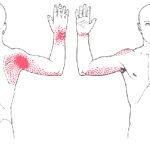
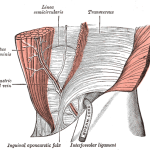
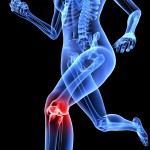
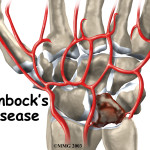
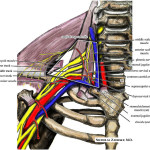

[…] This post was mentioned on Twitter by thesportspt and thesportspt, thesportspt. thesportspt said: Think you know tendinopathies? Think again. #physiotherapy #physical therapy http://bit.ly/aMoSvQ […]